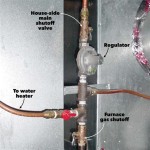Types Of Gas Fireplace Ignition Systems
Gas fireplaces are a popular choice for homeowners seeking a cozy and efficient way to heat their living spaces. These fireplaces offer a realistic flame and the convenience of a simple ignition system. However, not all gas fireplace ignition systems are created equal. Different types of ignition systems offer varying levels of reliability, efficiency, and safety. Understanding the various options available can help you choose the best ignition system for your needs.
Electronic Ignition Systems
Electronic ignition systems rely on a spark to ignite the gas. This system uses a small electrical current to create a spark that ignites the gas, allowing the flame to light. Electronic ignition systems are commonly found in modern gas fireplaces and offer several advantages:
- Reliability: Electronic ignition systems are highly reliable and provide consistent flame ignition. The spark is generated by a small electrical current, eliminating the need for a pilot light.
- Efficiency: The absence of a pilot light means that electronic ignition systems consume less energy, making them more efficient.
- Safety: Electronic ignition systems are generally considered safer than pilot light systems because they eliminate the risks associated with a constant flame.
Electronic ignition systems employ various technologies to generate the spark:
- Direct Spark Ignition: This system uses a direct spark to ignite the gas. The spark is created by a small electrical current flowing between two electrodes.
- Hot Surface Ignition: This system ignites the gas by a heated surface. The surface is heated using a small electrical current, and when the gas comes in contact with the hot surface, it ignites.
Standing Pilot Ignition Systems
In contrast to electronic ignition systems, standing pilot ignition systems employ a continuous flame, known as a pilot light, to ignite the gas. This pilot light remains lit constantly, providing a source of ignition for the main burner when needed.
Standing pilot ignition systems are less common in modern gas fireplaces due to their disadvantages:
- Energy Consumption: The pilot light constantly burns, consuming a significant amount of gas and energy.
- Safety Concerns: The presence of a continuous flame presents a potential fire hazard.
- Maintenance: Standing pilot systems require periodic maintenance and cleaning, ensuring the pilot flame operates correctly.
Despite their drawbacks, standing pilot ignition systems offer some advantages:
- Simplicity: These systems are simple and straightforward to operate, requiring minimal maintenance and technical expertise.
- Reliability: Standing pilots have a proven track record of reliability, providing a consistent source of ignition even in challenging environments.
Intermittent Pilot Ignition Systems
Intermittent pilot ignition systems represent a compromise between electronic and standing pilot systems. These systems use a small pilot light that only ignites when needed and remains lit for a short period.
Intermittent pilot systems offer several advantages:
- Improved Energy Efficiency: By only lighting the pilot when necessary, these systems significantly reduce energy consumption compared to standing pilot systems.
- Reduced Maintenance: The intermittent pilot requires less frequent maintenance and cleaning than a standing pilot.
However, intermittent pilot systems also have some drawbacks:
- Increased Complexity: These systems are more complex than standing pilot systems, potentially requiring more technical expertise.
- Greater Potential for Failure: Although intermittent pilots are more energy-efficient, the additional moving parts increase the potential for malfunction.
Choosing the Right Ignition System
The best ignition system for your gas fireplace depends on several factors, including personal preferences, budget, and the specific fireplace model. Electronic ignition systems are the most common choice today, offering improved efficiency, safety, and reliability. However, standing pilot systems provide a more traditional, albeit less efficient, option. Intermittent pilot systems present a compromise between the two, offering some energy savings while maintaining reasonable reliability. Consulting with a fireplace specialist can help you determine the ideal ignition system for your specific needs.

How Electronic Ignition Ipi Fireplaces Work

Gas Fireplace Pilot Lights Your Complete Guide Universe

Lighting Controls Rasmussen Gas Logs

A Simple Guide To Gas Fireplace Ignition Types Montigo

Gas Fireplace Pilot Lights Your Complete Guide Universe

All About Gas Burners For Fireplaces Types Features

Electronic Ignition

How Gas Fireplaces Work With An Ipi Vs Milivolt Ignition System Kozy Heat

Gas Log Ignition Systems Which One Is Right For You Episode 37 Experts In Fire

Gas Burner Ignition System Commercial Pilot Valve With Piezo For Stove Outdoor Camping Pipe Line Wood Fireplace Heater China Spare Parts Kitchen Appliances Made In Com
Related Posts








